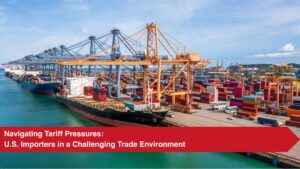Many countries in Asia have become major producers and exporters of different building materials to Europe and United States. This article will indicate the reasons of this trend.
Why are construction materials usually imported from Asia?
There are several reasons why building materials are normally imported from Asia.
- Low-cost production. Some Asian countries which are famous for manufacturing like China, Vietnam, and India, have lower labor cost and operational expenses than Western countries. Hence, construction materials can be produced and traded at a very affordable price in Asia that other regions are not able to compete.
- Availability of specialized building materials. Many companies in Asia have developed and produced successfully specialized building materials, such as high-strength concrete, green building materials, and energy-efficient insulation. These specialized materials are not widely manufactured in other regions, making Asia is sometimes the best and only option of where to import them.
- Since R&D cost in Asia is normally much lower than that in America or European countries, buyers may have access to latest innovations with competitive price when they work with Asian suppliers. Many Asian manufacturers have been investing heavily in developing new materials and production techniques which are more cost-efficient, sustainable, and long lasting. By using these new materials, businesses can enhance the quality and esthetic of their buildings.
What are the common building materials imported from Asia?
The following are some building materials that are normally exported from Asia:
- Steel: China, India, Japan, and South Korea are major manufacturers and traders of steel products, e.g. structural steel, reinforcement bars, and sheet metal.
- Cement: Cement and cement-based products are among the primary construction materials produced in China, India, Vietnam, and Thailand.
- Tiles and ceramics: With a long history and culture in tiles and ceramics usage, China, India, and Vietnam have expertise in production of ceramic tiles, porcelain tiles, and other types of ceramics.
- Glass: China and other Asian countries where have vast sources of sand are the trading hubs of various glass products, such as float glass, tempered glass, and laminated glass.
- Timber: Asian countries where have large areas of forest like China, Indonesia, Malaysia, and Thailand are strong in production and exports of timber products such as plywood, sawn timber, and veneer.
- Stone: India, China, and Vietnam mainly produce and export natural stone products such as granite, marble, and sandstone.
- Roofing materials: Tiles, shingles, metal roofing sheets, and other roofing materials are mostly manufactured and exported from China and India.
Quality control is the biggest obstacle to sourcing construction materials in Asia
Although sourcing construction materials from Asia has lots of competitive advantages, there are also some challenges that buyers need to consider. One of the major difficulties is the risk of quality control issues. You always want to ensure that the materials you import meet your quality standards, which is sometimes not easy to verify when dealing with overseas suppliers and the production is a thousand miles away from you.
Therefore, one of the best solutions is to have a third-party company do sourcing for you. It would be better if this third-party company can check and evaluate supplier’s capabilities, as well as product quality, rather than only sourcing. This is because you will have to get through them all sooner or later, so a one-stop service provider will be the best choice.
At HQTS, with local expertise and experience in major markets like China, Vietnam, India, we can help to find the most appropriate construction materials manufacturers for you. We also help to verify the supplier, check and test product quality, and other services to ensure you will receive the best products as you request. Contact us now for professional advice!




